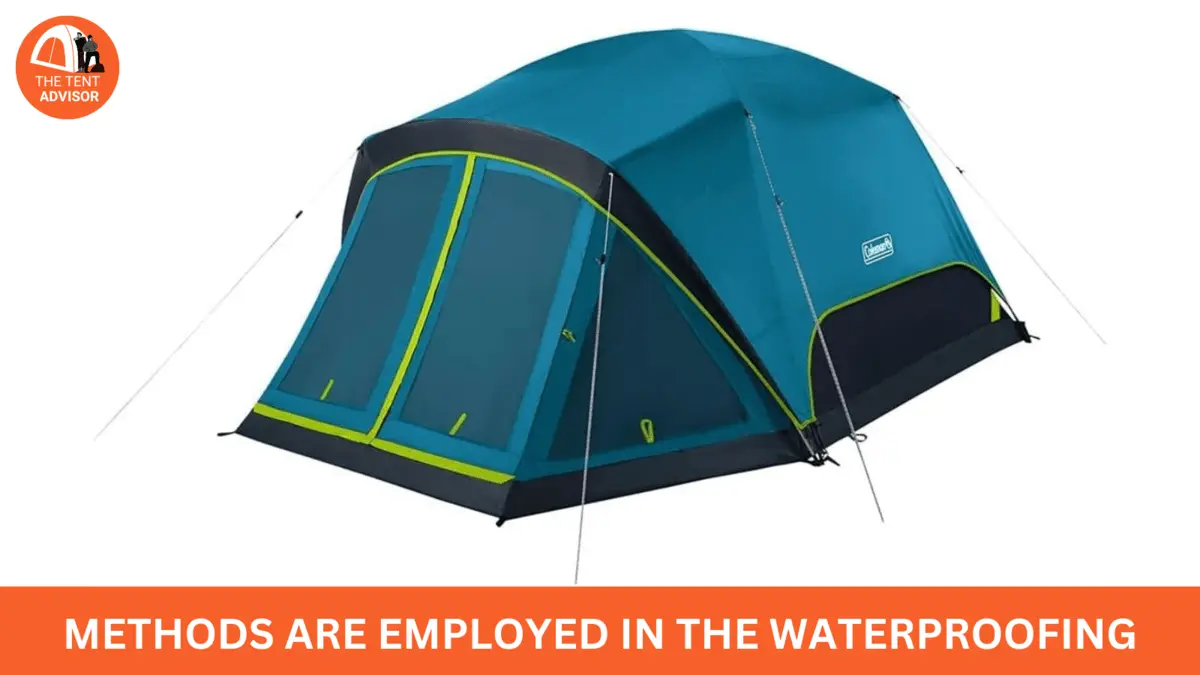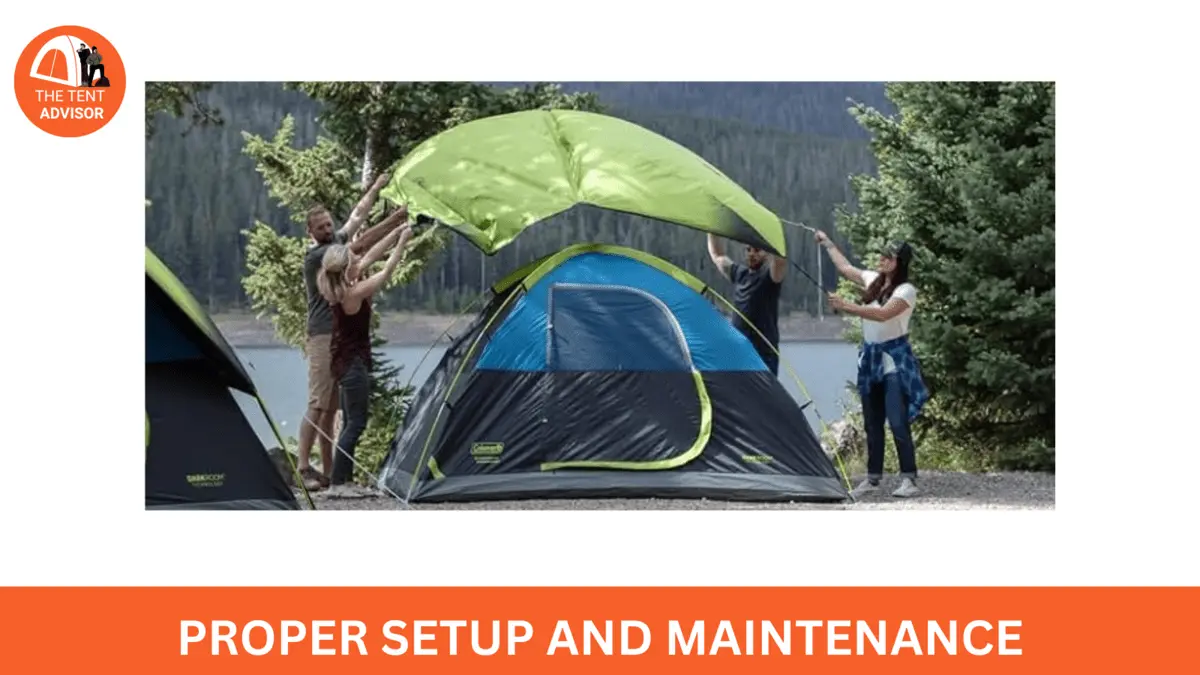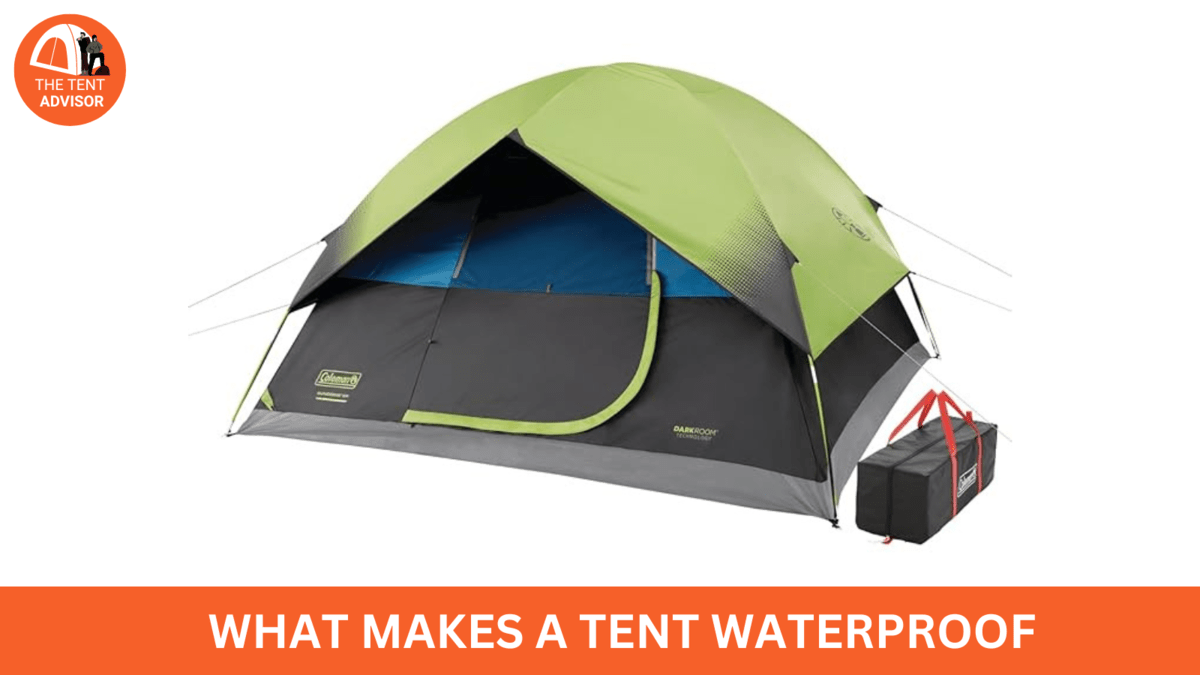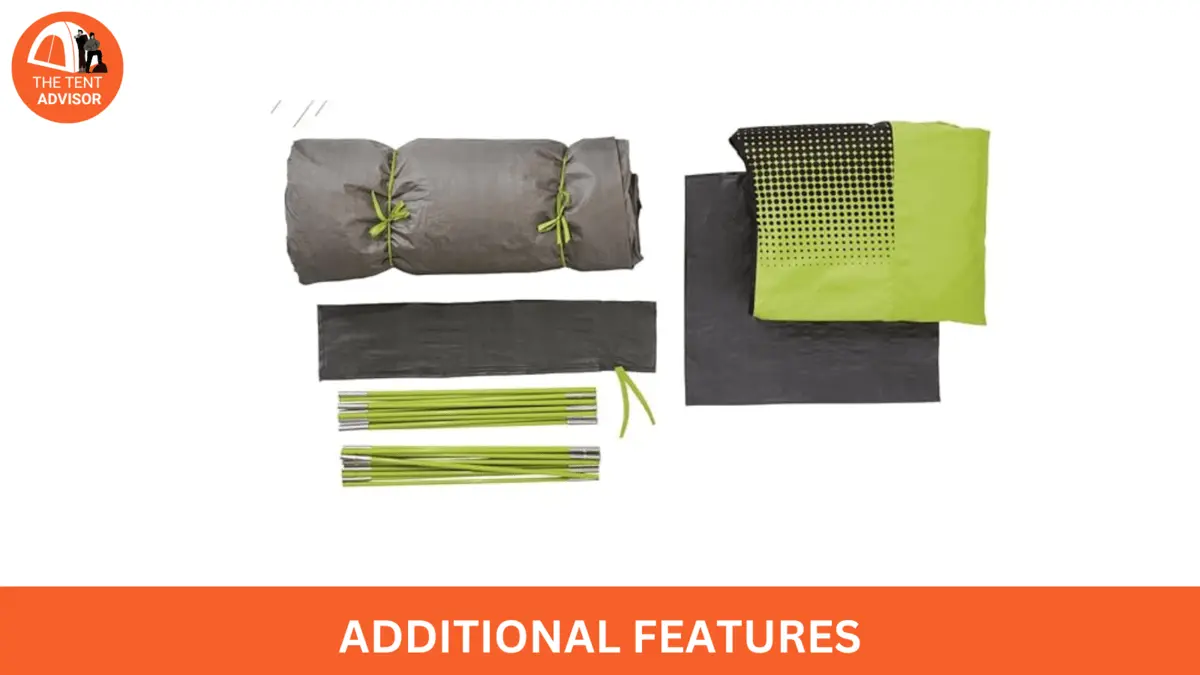Waterproofing is the main feature of outdoor camping tents, and when we think about planning camping in the rainy season, it should be waterproofed. Although Coleman is a well-known brand in the tent camping industry, the question needs a clear answer: Is the Coleman Darkroom tent waterproof?
Yes, any Coleman tent is waterproof. That is why Coleman organizes its Tents, such as not allowing water inside, using fabrics with water-resistant coatings, taped seams, and a bathtub corner with a rainfly.
On the other hand, Coleman has not disclosed the details of their Tent’s water resistance. So we called them to learn more about that, and their answer was interesting.
Thus, Coleman doesn’t say the tent hydrostatic test is on the labeled fabric. So we asked them to shed some light on that. They told us that the minimum rating applied for their fabrics is 450mm, although, in testing, the materials sometimes score higher.
This rate is meager compared to the required minimum waterproofing, usually 1200mm. Though the measurement may seem lower than the rest, Coleman said a low rating still does not mean the Tent is not waterproof. In addition to taping rainfly seams, they employ other techniques to improve waterproofing, such as Weathertech inverted seams and a patented welding technology.
What Methods Are Employed In The Waterproofing Of Coleman Tents?

There are several techniques that Coleman employs to render their tents waterproof. They finish their fabrics with a water-repelling agent, seam taping is done to all the seams, and they employ a bathtub-type floor with welded corner patents. Still, the level of 450mm to the hydrostatic head is rather low as that ranking, which would be the median class of outdoor waterproofing standing devices, will hinder its fully waterproof functionality.
Does Coleman Have A Hydrostatic Head Rating Table?
Yes, Coleman has stated in its user manual that there is a ‘hydrostatic head rating’ for its tents; however, this information is primarily not included in the information giver for every product offered. We had to pick up the phone and call Coleman to get that exact rating and understand the tents and how they are waterproofed. Our representative had this information from Coleman, and you can see the details from our conversation with them.
Read full review here
Will There Be An Improvement On The Coleman Tent Weatherproofing?!
Of course, yeah. There are also other methods available to you to fortify the water- resistance of your Coleman tent.
Seal All Seams: Get seam tape and apply it to the areas of the Tent where there are seams to restrict water infiltration through the joint-spanning gaps. This additional cover proves effective in keeping water out of the Tent.
Use A Water Resistant Spray: Move out of the Tent and apply a waterproof spray or heat-resistant liquid solution over it. This prevents water from flowing into the fabric and helps increase the Tent’s water resistance.
Use a Tarp Over the Tent:
To increase protection further, put a tarp over the Tent. The tarp must be elevated off the top of the Tent using assembly cords and trees, as contact with the Tent must be avoided.
Add a Tarp Underneath:
To reinforce the waterproofing of the tent floor, add a tarp or compatible tent footprint at the bottom of the Tent. Do not allow the edges of the tarp to surpass the edge of the Tent so that the edges do not sag with water.
Proper Setup and Maintenance:

Proper care of the Tent and how it is pitched and maintained significantly affects its performance. Check the materials constantly for any signs of damage that are likely to delaminate the Tent, causing leaking spots.
By following these recommendations, you will increase the aspects of your Tent’s waterproofing, ensuring dryness in more adverse weather conditions.
What Makes a Tent Waterproof?

There are various reasons for making the Tent waterproof.
Materials: Most of the tents come from synthetic fabric materials. These fabrics alone are not water resistant. Instead, they are coated with waterproofing materials to prevent water. This treatment gives the Tent its hydrostatic head (HH) rating, which is the measure of how well the Tent will hold water, which contributes to waterproofing.
Hydrostatic Head (HH) Rating: Hydrostatic Readings measure the pressure a piece of material can take before water penetrates the fabric. In simple terms, it is a measure of the level of waterproofing. A breakdown is given hereunder:
0-1000mm: Not Water Resistant (ideal for use in dry climatic conditions)
1000-1200mm: Water Resistant (Copes with drizzle)
1200-1500mm: Waterproof (Good for most three-season weather)
1500-5000 mm: Quite Waterproof (Applicable to very wet weather and for four-season camping activities)
Canvas: Quite waterproof (Average weather car camping)
Seams: This is essential even when the fabric is water resistant. Tents employ seam sealers and other water bafflers, such as inverted seams (this seam is sewn on the inside and treated), to combat the ingress of water.
Design Features:
Bathtub Floor: A design behind the concept which is characterized by an extending enclosed tent floor, an inch or more above the ground level, in order to prevent water entry.
Rainfly: A rainfly covers the Tent, especially the net parts of the wall. A full-coverage type of rainfly covers the whole of the roof and should go at least to the ground for better coverage protection.
Additional Features:

Higher Rainfly Coverage: For more protection, it would be a downpour. A rainfly that reaches the ground and covers all parts of the Tent is better.
High Waterproofing Rating: Preferred tent floors with waterproof ratings higher than 1200mm will increase protection.
Denier: The tent floor should have a denier fabric thicker than 60, though the outer tent wall should have a thicker denier than the tent floor.
Pole Material: Aluminum poles are more robust and long-lasting than fiberglass ones.
In short , relative to the weather specifications of a tent, waterproofing is related to a combination of treatments of the materials, seals of certain elements, construction type, and secondary application of additional materials. On the other hand, you’ll be satisfied with a tent if you desire more.
Waterproof Coating: The fabric manufacturers apply a waterproof coating to the outer surface of the Tent, including its floor. This coating works as a water barrier, keeping the fabric dry.
Seam Sealing: Like any other structure, the Tents seam will likely leak water that penetrates inside. To deal with this situation, tent manufacturers apply fabric seam sealers on the sides and the floor of the Tent.
Bathtub Floor Design: This design consists of a floor fashioned into the shape of a bathtub, which raises the level of the tent walls to prevent water intrusion at the base of the Tent.
Rain Fly: A rain fly is a waterproof cover fitted to the Tent that is used as an extra layer against rain when camping. There are also those that cover the upper portion of the Tent, eliminating the need for a tarp even during pour rains.
All these techniques combine seamlessly for the purpose of a tent that can withstand unpredictable weather like heavy rain and wind.
Is the Coleman Darkroom tent waterproof? Final result 70/100
As for Coleman Tents, they utilize weather seals that include sealed bathtub floors and other features. The issue, however, is that Coleman tents are not perfect and in most cases also have a small hydrostatic head (HH) which in some models rests at around 450mm, which is lower than the average waterproof standard. This means
Coleman tents will withstand light showers and usually windy conditions, but one would not be very comfortable out in a downpour.
People who plan to camp in the rain frequently may want to cover their Tent with a tarp or choose a tent with a higher hydrostatic head rating. Generally, Coleman tents are acceptable if the weather is clear or drizzles, but they may not be highly comfortable when used in extreme weather.
FAQs on Is the Coleman Darkroom tent waterproof?
Will Coleman tents hold up in very heavy rain?
Coleman tents are made to last and withstand light to moderate rain, but because of their lower HH rating of 450mm, the chances of being fully waterproof in hefty rains are minimal. Use a tarp in addition to a regular rainfly for better protection, or choose a tent with a high HH rating.
Do all tents keep you dry?
Most campers matured in the wet season remember that most tents are meant to be used in rather wet conditions but it is important to compare the tent waterproofing elements and h h rating. For decent waterproofing, there should be at least a 1200 mm rating.
Do tents go bad?
Yes, tents do go bad especially waterproofing over time if they have not been pitched or taken care of properly. On exposure to different environmental conditions and some usage wear and tear, this also damages the tents waterproof ability.
Are Coleman tents machines washable?
No, Coleman tents are not machine washable. Instead, sweep out soil and sponge with soapy, clean water. Never put the Tent away before the fabric has completely dried to moisture.
